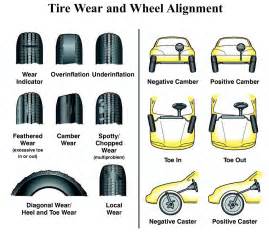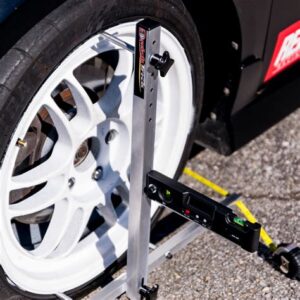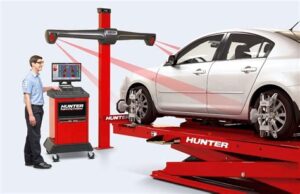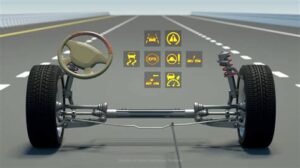Maintaining your vehicle’s performance is crucial for a safe and enjoyable driving experience, and one key aspect often overlooked is wheel alignment. Misalignment can lead to uneven tire wear, compromised handling, and increased fuel consumption, all of which can put a damper on your driving experience. If you’ve noticed that your car pulls to one side or if your tires are wearing unevenly, it might be time to evaluate your vehicle’s alignment. In this article, we will explore the signs that indicate your car needs alignment, guide you through how to check your tire wear patterns, and explain the importance of proper wheel alignment. We’ll also provide practical steps to test your car’s steering response and delve into the numerous benefits of regular car alignment maintenance, ensuring you keep your vehicle running smoothly and efficiently.
Signs Indicating Your Car Needs Alignment
It’s crucial to recognize the how to identify when your car requires alignment. Ignoring these signs can lead to uneven tire wear and potentially unsafe driving conditions.
- Steering Wheel Off-Center: If your steering wheel is not centered while driving straight, it may indicate poor alignment.
- Uneven Tire Wear: Inspect your tires for any uneven wear patterns, such as bald spots or excessive wear on one side.
- Drifting or Pulling: If your car tends to drift to one side or requires constant correction to stay straight, alignment may be necessary.
- Vibration in Steering Wheel: Unexplained vibrations in the steering wheel at various speeds are another indicator of misalignment.
- Squealing Tires: A high-pitched squealing noise while turning can also be a sign of poor alignment.
Being aware of these symptoms will help you gauge when your car may need attention regarding alignment, ensuring better handling and safety on the road.
How To Check Your Tire Wear Patterns
Checking your tire wear patterns is essential in determining whether your car needs alignment. Uneven tire wear can be a clear indicator that your vehicle is not aligned correctly. Here’s how to how to check for these patterns:
-
Visual Inspection: Begin with a thorough visual check of your tires. Look for any uneven wear in specific areas. Typical patterns include:
- Inner or Outer Edge Wear: This suggests that your wheels may be misaligned.
- Center Wear: If the center of the tire is more worn than the edges, it may indicate over-inflation.
- Scalloped Wear: This can point to issues with suspension components and alignment that need addressing.
- Tread Depth Measurement: Use a tread depth gauge to measure the depth at various points across the tire’s width. If the depth varies significantly, it’s a sign that alignment may be needed.
- Check Tire Pressure: Ensure each tire is inflated to the manufacturer’s recommended pressure. Incorrect tire pressure can contribute to uneven wear.
- Regular Rotation: Keep in mind that regularly rotating your tires can help identify wear patterns earlier and can extend the life of your tires.
If you observe any of these wear patterns, it is advisable to have your vehicle inspected for alignment issues. Addressing tire wear promptly can lead to better handling, improved fuel economy, and a longer lifespan for your tires, ultimately ensuring a safer driving experience.
The Importance Of Proper Wheel Alignment
Proper wheel alignment is crucial for maintaining your vehicle’s performance and ensuring a smooth driving experience. When your car’s wheels are correctly aligned, it enhances handling, fuel efficiency, and tire longevity. Here are some key reasons to prioritize proper wheel alignment:
- Improved Safety: When your wheels are aligned, your car is more stable, reducing the risk of accidents caused by steering misalignment.
- Better Fuel Efficiency: Misaligned wheels can cause your engine to work harder, ultimately leading to increased fuel consumption. Maintaining proper alignment can help you save money on gas.
- Extended Tire Life: Correct alignment prevents uneven tire wear, which prolongs the life of your tires and reduces replacement costs.
- Enhanced Handling: When your wheels are properly aligned, your vehicle responds better to steering inputs, making for a more enjoyable and controlled driving experience.
- Cost Savings: Investing in regular wheel alignment reduces the likelihood of costly repairs linked to uneven tire wear and misaligned suspension components.
Understanding how to maintain proper wheel alignment not only contributes to better driving safety but also enhances the overall performance and efficiency of your vehicle.
Steps To Test Your Car’s Steering Response
Testing your car’s steering response is essential in determining whether it requires alignment adjustments. Here are the steps you can follow to effectively check your vehicle’s steering:
- Find a Safe Testing Area: Choose a level, empty stretch of road where you can perform the test without distractions or hazards.
- Check Your Tires: Before starting, ensure that your tires are properly inflated and in good condition. Uneven tire pressure can affect steering response.
- Drive Straight: Begin driving your car in a straight line at a low speed (around 25 mph) to evaluate its handling.
- Observe Steering Response: Let go of the steering wheel for a moment and monitor if the car pulls to one side. If it does, your vehicle may need alignment.
- Perform a Quick Turn: Next, turn the steering wheel left and right with moderate force. Notice any hesitation or lag in response; this can indicate issues with alignment or other steering components.
- Feel for Vibration: While driving, if you feel excessive vibrations in the steering wheel, it might signify misalignment.
- Take Notes: Keep records of your observations. If you notice persistent steering problems, it might be time to consult a professional for further inspection.
By following these steps, you will have a clearer understanding of how to evaluate your car’s steering response and whether it points to alignment issues.
Understanding The Benefits Of Car Alignment Maintenance
Maintaining proper car alignment is crucial for ensuring the safety, efficiency, and longevity of your vehicle. Here are some key benefits to consider:
- Improved Fuel Efficiency: When your car’s wheels are aligned correctly, it reduces the resistance between the tires and the road. This means your engine doesn’t have to work as hard, leading to better fuel economy.
- Enhanced Handling: Proper alignment allows your vehicle to respond better to steering inputs. You’ll experience smoother handling and improved control, making for a safer driving experience.
- Extended Tire Lifespan: Misalignment can cause uneven tire wear, leading to the need for premature tire replacement. Keeping your wheels aligned can help you get the most life out of your tires, saving you money in the long run.
- Improved Safety: A well-aligned vehicle is less likely to pull to one side, which can be especially dangerous in adverse weather conditions. Regular alignment maintenance ensures that your car remains stable and predictable on the road.
- Reduced Repair Costs: By addressing alignment issues early, you can prevent more serious problems down the line, such as suspension damage. This proactive approach can save you considerable amounts in repair costs.
Understanding how to maintain your car’s alignment can significantly enhance your vehicle’s performance and safety while also saving you time and money in the future. Regular inspections and timely adjustments are essential parts of a responsible vehicle maintenance routine.
Frequently Asked Questions
What are the signs that a car needs alignment?
Common signs include uneven tire wear, steering wheel off-center, vehicle pulling to one side, and vibrations in the steering wheel.
How do I know if my tires are wearing unevenly?
You can check for uneven tire wear by visually inspecting the tread; if one side is worn more than the other, it may indicate alignment issues.
Can misalignment cause any long-term damage to my car?
Yes, misalignment can lead to uneven tire wear and can also affect suspension components, potentially resulting in more costly repairs over time.
How often should I check my car’s alignment?
It’s a good practice to check your car’s alignment every six months or whenever you notice symptoms like pulling or uneven tire wear.
What is the process for checking a car’s alignment?
A professional mechanic will use specialized equipment to measure the angles of the wheels and compare them to the manufacturer’s specifications.
Is a wheel alignment something I can do myself?
While basic checks can be done at home, a precise wheel alignment typically requires specialized tools and should be done by a professional.
What are the typical costs associated with a wheel alignment?
The cost for a wheel alignment can vary, but it typically ranges from $50 to $100, depending on the vehicle type and location.





